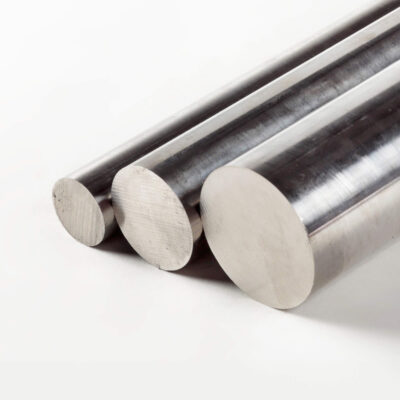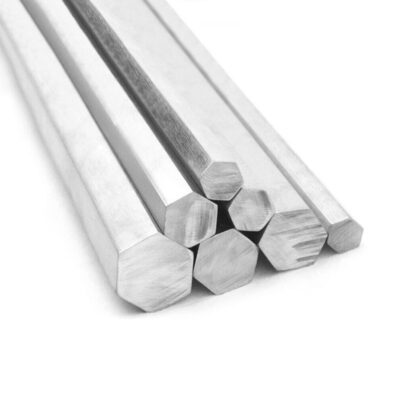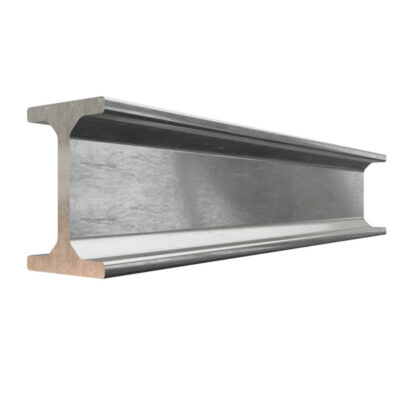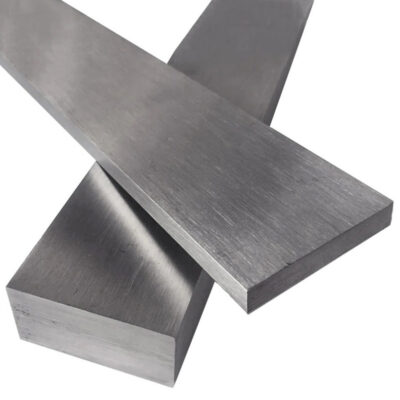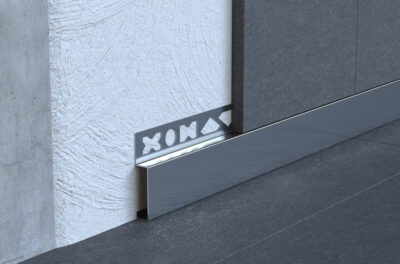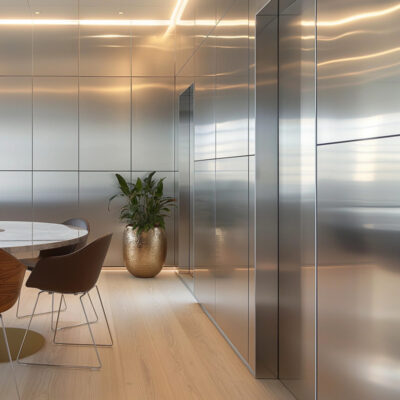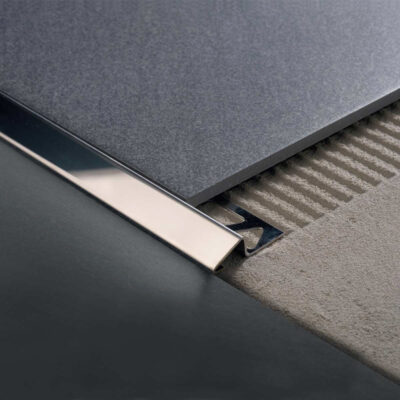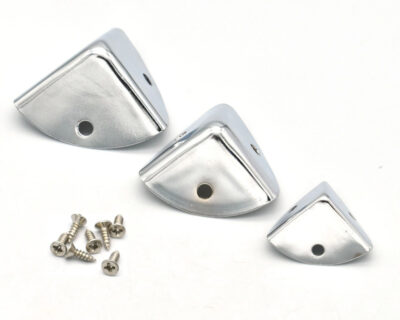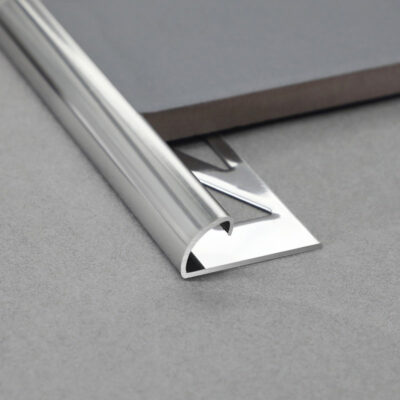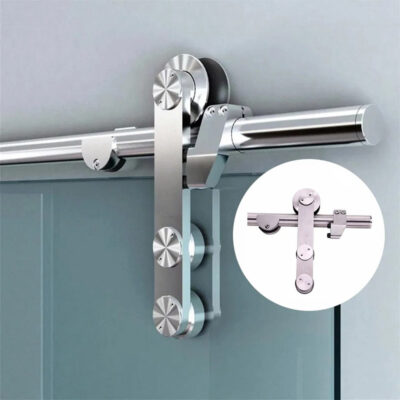The Evolution and Importance of Stainless Steel
The accidental discovery of stainless steel in 1913 by Harry Brearley, who was searching for a corrosion-resistant gun barrel alloy, transformed modern manufacturing forever. While examining samples of his experimental steel alloys that had been discarded in a scrap heap, he noticed that one particular sample hadn’t rusted despite months of exposure to the elements. This observation sparked what would become one of the most revolutionary materials in human history.
Today, stainless steel surrounds us in ways we barely notice. I was recently touring a food processing facility and was struck by how every surface—from the massive storage tanks to the smallest fixing bolts—utilized different grades of this remarkable material. The plant manager explained that their operation would simply be impossible without the specific properties of carefully selected stainless steel grades.
The diversity of stainless steel grades has expanded dramatically since those early discoveries. What began as a single corrosion-resistant alloy has evolved into hundreds of specialized grades, each engineered for specific combinations of strength, workability, corrosion resistance, and cost-effectiveness. The American Iron and Steel Institute (AISI) and the Unified Numbering System (UNS) have developed standardized classification systems that help engineers and manufacturers identify and select the appropriate grade for their application.
These classification systems aren’t just academic exercises—they’re practical tools that enable precise material selection across global supply chains. When an aerospace engineer specifies grade 17-4PH for a critical component, suppliers worldwide understand exactly what material properties are required. This standardization has allowed for the globalization of manufacturing while maintaining strict quality controls.
The proper selection of stainless steel grades impacts everything from product lifespan to safety, cost, and environmental impact. A hospital building I consulted on required different grades for its exterior cladding (facing marine exposure), surgical equipment rooms (requiring absolute cleanliness), and structural components (needing strength-to-weight optimization). Each application demanded unique material properties that only specific stainless steel grades could provide.
E-Sang and similar companies specializing in stainless steel components understand that proper grade selection represents the critical first step in any successful manufacturing project. The difference between selecting grade 304 versus 316 for marine applications, for instance, can mean the difference between premature failure and decades of trouble-free service.
Understanding the Classification Systems
Navigating the world of stainless steel grades initially struck me as needlessly complex. Why couldn’t we simplify things with just a few standard options? This perspective changed dramatically after I witnessed catastrophic failure in a chemical processing facility that had installed the wrong grade in a particularly aggressive environment. The seemingly minor difference between two similar-looking grades resulted in millions in damages and weeks of downtime.
The most widely recognized classification system comes from the American Iron and Steel Institute (AISI), which categorizes stainless steels into series using three-digit numbers. The 300 series represents austenitic stainless steels, the 400 series covers ferritic and martensitic types, and the 200 series indicates austenitic grades with nitrogen additions. This system, while incomplete by today’s standards, provides the foundation for most discussions about stainless steel grades.
More comprehensive is the Unified Numbering System (UNS), which assigns a unique identifier to each metal alloy. For stainless steels, these identifiers begin with “S” followed by a five-digit number. The UNS system captures hundreds of grades beyond the scope of the AISI system, making it particularly valuable for specialized applications.
Beyond these American-originated systems, we find international standards that sometimes use different terminology:
| Standard | Origin | Example Designation | Equivalent to | Notes |
|---|---|---|---|---|
| EN | Europe | 1.4301 | 304 | Uses a numbering system where the first digit indicates steel type |
| JIS | Japan | SUS304 | 304 | “SUS” prefix indicates stainless steel |
| GB | China | 0Cr18Ni9 | 304 | Chemical composition is encoded in the name |
| GOST | Russia | 08X18H10 | 304 | Cyrillic-based system indicating composition |
What truly matters in these classification systems isn’t the numbering itself but the underlying metallurgical structure that determines performance. Stainless steels are categorized into five main types:
Austenitic: The most common type, these grades contain high nickel content and offer excellent corrosion resistance and formability.
Ferritic: These chromium-rich, nickel-free grades provide good corrosion resistance at lower cost than austenitic types.
Martensitic: Heat-treatable grades that can be hardened to provide high strength and wear resistance.
Duplex: Containing both austenitic and ferritic structures, these provide superior strength and corrosion resistance, particularly in chloride environments.
Precipitation Hardening: Specialized grades that can be aged to develop exceptional strength while maintaining good corrosion resistance.
During a consultation with a medical device manufacturer, I noticed their material specifications simply called for “stainless steel” without indicating a specific grade. This dangerous oversight could have led to using grades unsuitable for implantable devices. We implemented a new material selection protocol specifying appropriate implant-grade stainless steels like 316L with proper certifications, demonstrating how critical proper classification understanding can be.
A manufacturing engineer once told me, “The classification system isn’t just bureaucratic complexity—it’s the language that prevents costly mistakes.” This statement resonated with me after seeing how easily miscommunications about grades can occur between designers, suppliers, and fabricators.
The Versatility of Austenitic Stainless Steels
The 300 series austenitic stainless steels represent the workhorses of the industry, accounting for approximately 70% of all stainless steel production worldwide. Their distinctive combination of corrosion resistance, formability, and toughness makes them indispensable across countless applications.
Grade 304 (sometimes called 18/8 for its chromium and nickel content) stands as the most widely produced stainless steel in the world. Walking through a commercial kitchen recently, the chef pointed out virtually everything was made from this material—from the countertops to the storage racks and even the sink fixtures. Its ubiquity stems from a balanced combination of properties and reasonable cost.
I’ve often found that the jump from 304 to 316 grade represents one of the most critical decision points in material selection. While seemingly similar, the addition of 2-3% molybdenum in 316 dramatically improves resistance to chloride environments. During a consulting project for a seaside architectural installation, we specified 316 despite its roughly 20% cost premium over 304. Three years later, while inspecting the site, the 316 components remained pristine while nearby 304 fixtures from another project showed significant tea-staining and pitting corrosion from the salt-laden air.
Here’s a comparative look at the major austenitic grades and their typical applications:
| Grade | Key Alloying Elements | Corrosion Resistance | Common Applications | Special Characteristics |
|---|---|---|---|---|
| 304/304L | 18% Cr, 8% Ni | Good general corrosion resistance | Food equipment, kitchen sinks, architectural | The “standard” stainless steel; L variant has lower carbon for better welding |
| 316/316L | 16% Cr, 10% Ni, 2% Mo | Superior resistance to chlorides | Marine equipment, chemical processing, pharmaceutical | The “marine grade”; considerably more expensive than 304 |
| 321 | 18% Cr, 10% Ni, Ti | Good at elevated temperatures | Exhaust systems, heat exchangers | Titanium stabilized to prevent sensitization during welding |
| 310 | 25% Cr, 20% Ni | Exceptional heat resistance | Furnace parts, heat treatment baskets | Retains strength at very high temperatures |
| 201 | 17% Cr, 4% Ni, 7% Mn | Moderate | Automotive trim, cookware | Lower-cost alternative to 304 using manganese to replace some nickel |
The “L” designation (as in 304L or 316L) indicates a low-carbon variant containing a maximum of 0.03% carbon instead of the standard 0.08%. This seemingly minor adjustment makes a critical difference in welded applications, as the lower carbon content prevents chromium carbide precipitation at weld boundaries—a phenomenon called sensitization that can lead to intergranular corrosion.
A particular challenge with austenitic grades emerges in their susceptibility to stress corrosion cracking under specific conditions. I encountered this firsthand when investigating failed components in a chemical processing facility. The combination of chloride-containing chemicals, elevated temperatures, and residual stresses from fabrication had created the perfect storm for cracking in their 304 piping system. The solution involved replacing critical sections with the more resistant 316L grade and implementing proper stress-relief procedures.
Austenitic stainless steels aren’t magnetic in their annealed condition—a property that sometimes causes confusion. During a manufacturing audit, I discovered a supplier using a simple magnet test to “verify” material grades. While this can help distinguish austenitic from ferritic or martensitic grades, it provides no verification within the austenitic family itself and can be misleading if the material has been cold-worked, which induces some magnetism.
The nitrogen-enhanced austenitic grades (like 201 and 202) represent an interesting evolution in stainless steel development. Developed during nickel shortages, these grades substitute manganese and nitrogen for some of the nickel content, offering cost savings while maintaining austenitic structure. A fastener manufacturer I worked with switched to these grades during a period of extreme nickel price volatility, achieving substantial cost savings while meeting all performance requirements.
Ferritic and Martensitic Stainless Steel: Strengths and Applications
The 400 series stainless steels encompass both ferritic and martensitic grades, offering distinctive property sets that complement their austenitic cousins. These grades often go overlooked in general discussions about stainless steel, yet they solve specific engineering challenges that austenitic grades cannot address cost-effectively.
Ferritic stainless steels (typically 10.5-30% chromium with minimal nickel) possess a body-centered cubic crystal structure similar to mild steel. During a tour of an automotive exhaust manufacturing facility, I was surprised to learn they exclusively used ferritic grade 439 rather than the austenitic 304 I had expected. The production engineer explained that ferritic grades offer superior resistance to stress corrosion cracking at high temperatures and better thermal fatigue resistance—critical factors in exhaust system longevity.
Another compelling advantage of ferritic grades is their resistance to chloride stress corrosion cracking. At a desalination plant, grade 444 (a higher-performance ferritic with molybdenum addition) was specified for components that had previously failed when made from 316L. Despite containing less nickel—typically the expensive element in stainless formulations—the 444 grade outperformed its more costly austenitic counterpart in this specific chloride-rich environment.
The magnetic nature of ferritic stainless steels sometimes becomes an important selection criterion. In an MRI facility design project, we needed materials that wouldn’t be attracted to the powerful magnetic field of the imaging equipment. While the non-magnetic austenitic grades were obvious choices for most components, we specified ferritic grade 430 for decorative elements deliberately designed to be magnetically attractable for equipment anchoring purposes.
Martensitic stainless steels differ significantly from both austenitic and ferritic varieties in one key respect: they can be heat treated to significantly higher hardness levels. This capability makes them the preferred choice for applications requiring wear resistance combined with moderate corrosion protection:
| Grade | Key Properties | Typical Hardness Range | Common Applications | Special Characteristics |
|---|---|---|---|---|
| 410 | Basic martensitic grade | 25-40 HRC | Valve components, pump shafts | Good balance of hardness and toughness |
| 420 | Higher carbon content | 38-52 HRC | Surgical instruments, knife blades | Can achieve very high hardness levels |
| 440C | High carbon, high chromium | 58-62 HRC | Ball bearings, high-end cutlery | Maximum hardness with reasonable corrosion resistance |
| 416 | Free-machining variant | 35-45 HRC | High-volume precision parts | Contains sulfur for improved machinability |
A particular challenge with martensitic grades arises during welding. While visiting a fabrication shop that specialized in knife making, I observed their careful pre- and post-weld heat treatment protocols for 420 grade components. Without these treatments, the heat-affected zone near welds becomes extremely brittle and prone to cracking. This contrasts sharply with austenitic grades, which generally maintain their ductility during welding.
The economic advantage of 400 series grades can be substantial. A food processing equipment manufacturer I consulted for was able to reduce material costs by 30% by selectively replacing non-critical 304 components with 430 grade. The ferritic 430 provided adequate corrosion resistance for the specific environment while offering significant cost savings due to its lower nickel content.
However, ferritic and martensitic grades do have limitations that require careful consideration. Their corrosion resistance generally doesn’t match that of austenitic grades, particularly in aggressive environments. During a failure analysis for a chemical processing facility, I identified improper grade selection as the root cause—martensitic 410 had been mistakenly specified for a component that required the superior corrosion resistance of austenitic 316L.
An interesting development in this family is the creation of enhanced ferritic grades like 444 and 446 with higher chromium and molybdenum additions. These “super ferritic” grades approach the corrosion resistance of austenitic 316 while maintaining the benefits of ferritic structure. A heat exchanger manufacturer has successfully deployed these grades in moderately aggressive chemical environments, achieving both performance targets and cost objectives.
Duplex and Precipitation Hardening Grades: Advanced Solutions
Duplex stainless steels represent one of the most significant metallurgical innovations in recent decades. With a microstructure containing approximately equal parts austenite and ferrite, these grades offer an exceptional combination of strength, corrosion resistance, and economy that neither standard austenitic nor ferritic grades can match independently.
My first encounter with duplex stainless came during a troubleshooting assignment for an offshore oil platform. The facility had experienced repeated failures of their seawater handling system made from 316L stainless. The combination of chlorides, mechanical stresses, and occasional microbiologically influenced corrosion created an environment too aggressive for conventional austenitic grades. The solution was implementing 2205 duplex stainless, which not only eliminated the corrosion issues but also allowed for thinner-walled components due to its nearly twice-higher yield strength compared to 316L.
The economic case for duplex grades often proves compelling despite their higher per-pound cost:
| Grade | Approximate Yield Strength | Relative Corrosion Resistance | Material Cost Factor* | Potential Material Savings | Key Applications |
|---|---|---|---|---|---|
| 316L | 30 ksi (205 MPa) | Baseline | 1.0x | – | Chemical processing, marine |
| 2205 | 65 ksi (450 MPa) | Superior | 1.3x | Up to 40% thinner sections | Offshore, desalination, bridges |
| 2507 | 80 ksi (550 MPa) | Exceptional | 1.8x | Up to 50% thinner sections | Highly aggressive environments |
| LDX 2101 | 65 ksi (450 MPa) | Good | 0.9x | Up to 40% thinner sections | Structural components, tanks |
*Relative cost factor compared to 316L (varies with market conditions)
The lean duplex grades like LDX 2101 represent a particularly interesting innovation. During a project for a large storage tank, we evaluated material options for both cost and performance. Conventional thinking would have led to either 316L (good corrosion resistance but higher cost) or 304 (lower cost but marginal corrosion performance). Instead, we specified lean duplex, which delivered better mechanical properties than either austenitic grade while actually costing less than 316L due to its reduced nickel content.
Working with duplex grades requires specialized knowledge. While visiting a fabrication shop that had recently begun working with 2205, I noticed they were applying the same welding procedures used for austenitic grades. This approach risked creating excessive ferrite in the weld zone, potentially compromising corrosion resistance and toughness. We developed modified procedures with controlled heat input and, in some cases, nitrogen-enriched shielding gases to maintain the critical phase balance.
On the opposite end of the stainless steel spectrum lie the precipitation hardening (PH) grades, which achieve remarkable strength through aging treatments after fabrication. The aerospace industry particularly values these materials for their unique combination of corrosion resistance, high strength, and dimensional stability.
During a tour of a satellite component manufacturing facility, I observed intricate parts being machined from 17-4 PH stainless. The engineer explained that after complete fabrication, the components would undergo a simple aging treatment at around 900°F (480°C) that would nearly double their strength with minimal dimensional change. This capability allows for machining in the more workable condition while achieving final strengths approaching 200 ksi (1380 MPa).
A particularly challenging project involved surgical instruments that required exceptional hardness combined with corrosion resistance and complex geometries. The conventional approach would have used martensitic 440C with its limitations in formability. Instead, we specified 17-4 PH, which allowed more complex forming operations in the solution-annealed condition, followed by precipitation hardening to achieve the required final hardness.
The versatility of PH grades stems from their various available aging treatments:
| Grade | Condition | Approximate Yield Strength | Aging Temperature | Key Characteristics |
|---|---|---|---|---|
| 17-4 PH | H900 | 170 ksi (1170 MPa) | 900°F (480°C) | Maximum strength, moderate toughness |
| 17-4 PH | H1150 | 110 ksi (760 MPa) | 1150°F (620°C) | Moderate strength, improved toughness |
| 15-5 PH | H1025 | 145 ksi (1000 MPa) | 1025°F (550°C) | Better toughness than 17-4 PH |
| PH 13-8 Mo | H950 | 180 ksi (1240 MPa) | 950°F (510°C) | Superior toughness and corrosion resistance |
A common misconception I’ve encountered is treating PH grades as direct replacements for standard stainless steels. During a failure analysis of aerospace components, I discovered that the designer had specified 17-4 PH for its strength but failed to include the critical aging treatment in the manufacturing process. The parts were essentially being used in the solution-annealed condition, with strength far below design requirements.
Despite their advantages, both duplex and precipitation hardening grades have specific limitations. Duplex grades generally have an upper temperature limit of about 600°F (315°C) before phase embrittlement becomes a concern. PH grades can be challenging to weld after aging and may not offer the same level of corrosion resistance as high-end austenitic grades like 316L in certain environments.
Selecting the Right Grade: A Decision Framework
Choosing the optimal stainless steel grade often becomes a complex balancing act between competing factors. Too often, I’ve seen decisions made based on a single criterion—typically either cost or corrosion resistance—without considering the full application context. This narrow approach frequently leads to either unnecessary expense or premature failure.
About five years ago, I was called to investigate recurring failures in a food processing plant’s transfer piping system. The maintenance engineer had repeatedly specified 304 stainless based solely on its common usage in food applications. However, the specific combination of chlorinated cleaning chemicals, elevated temperatures, and mechanical stresses created perfect conditions for stress corrosion cracking. A more comprehensive analysis led us to specify duplex 2205 for the most critical sections, which eliminated the failures despite the initially higher material cost.
A structured decision framework helps navigate these complex choices:
- Environmental Assessment: Begin by thoroughly understanding the service environment:
- Temperature range and cycling
- Chemical exposure (particularly acids, chlorides, caustics)
- Mechanical stresses (static, dynamic, impact)
- Abrasion or wear requirements
- Regulatory or code requirements (ASME, FDA, etc.)
- Performance Requirements: Define clear performance targets:
- Required service life
- Acceptable maintenance intervals
- Strength and hardness needs
- Formability or fabrication constraints
- Surface finish requirements
- Magnetic property requirements
- Economic Considerations: Evaluate total lifecycle costs:
- Initial material costs
- Fabrication complexity and costs
- Potential material reduction through higher-strength grades
- Maintenance requirements
- Replacement costs
- Downtime implications of failure
- Availability and Supply Chain: Consider practical procurement factors:
- Standard stock availability
- Lead times for specialty grades
- Alternative grade options
- Supplier quality verification capabilities
- Required certifications and traceability
When consulting for a pharmaceutical equipment manufacturer, we implemented this framework as a formal decision matrix. Each potential grade was scored across these categories, weighted by importance to the specific application. This approach transformed what had been an opinion-based selection process into a data-driven decision model. The result was not only better-performing equipment but also more consistent decision-making across their engineering team.
Common selection mistakes I’ve observed include:
Overspecification: A municipal water treatment facility had historically specified 316L for all stainless components based on a decades-old standard. Upon evaluation, we found that 304L would provide adequate performance for over 70% of their applications at significant cost savings. The “better safe than sorry” approach had cost them hundreds of thousands in unnecessary premium material costs.
Underestimation of environment severity: Conversely, a chemical processing facility had selected 304 stainless for pump components based on laboratory corrosion testing. The tests, however, didn’t account for the combined effects of turbulence, temperature cycling, and occasional process upsets. Implementing 317L (a higher-molybdenum variant of 316L) solved their recurring failure problems.
Failure to consider fabrication requirements: During a project review for a custom heat exchanger, the designer had specified high-performance super duplex 2507 for its excellent corrosion properties. However, the fabricator lacked experience with this grade, resulting in improper welding procedures that compromised the material’s properties. A more holistic approach would have considered fabrication capabilities alongside performance requirements.
Overlooking physical properties: A food processing equipment designer selected 430 ferritic stainless solely based on corrosion compatibility and cost. They failed to consider its higher thermal conductivity compared to austenitic grades, which created unexpected heat transfer issues in their application. This oversight required costly redesign efforts.
A particularly valuable selection approach I’ve employed is the “boundary testing” method. Rather than immediately jumping to premium grades, we identify the performance threshold where standard grades begin to fail, then select a grade with appropriate margin beyond that threshold. This approach prevents both under-selection (leading to failure) and over-selection (driving unnecessary costs).
Consulting experienced metallurgists and material suppliers during the selection process often reveals options not initially considered. In one architectural project, the conventional choice between 304 and 316 for exterior panels was expanded to include ferritic grade 444 and lean duplex 2101, both offering comparable performance at different price points and with different aesthetic characteristics.
Testing and Verification of Stainless Steel Grades
The sobering reality I’ve encountered repeatedly in my career is that material misrepresentation—whether intentional or accidental—happens with alarming frequency. During an audit of a critical component manufacturer, we discovered that approximately 3% of their “certified” stainless steel inventory actually failed to meet the specified grade requirements. This finding highlighted the essential nature of proper testing and verification protocols.
Visual inspection alone proves woefully inadequate for stainless steel verification. Even experienced metallurgists cannot reliably distinguish between similar grades through appearance. I recall a particularly troubling case where a fabricator had mistakenly mixed 304 and 316L in a critical chemical processing application. The error was only discovered after premature corrosion occurred, resulting in significant production losses.
Modern verification methods range from simple field tests to sophisticated laboratory analyses:
Portable X-Ray Fluorescence (XRF) Analyzers: These handheld devices have revolutionized field verification by providing immediate elemental analysis. During a construction project for a pharmaceutical facility, we implemented 100% XRF scanning of critical piping components, identifying several mismarked items that would have created serious compliance issues if installed.
Positive Material Identification (PMI): This standardized testing protocol has become mandatory in many industries, particularly oil and gas, chemical processing, and pharmaceutical manufacturing. A typical PMI program includes:
| Test Level | Description | Typical Applications | Limitations |
|---|---|---|---|
| Level 1 | Visual inspection and documentation review | Low-risk, non-critical components | Cannot detect material substitution |
| Level 2 | Field testing (XRF, magnetic testing) | Medium-risk components | May miss subtle compositional issues |
| Level 3 | Laboratory testing (optical emission spectroscopy, etc.) | Critical components, failure investigation | Higher cost, time-consuming |
| Level 4 | Comprehensive analysis (including microstructural examination) | Failure analysis, critical safety components | Highest cost, specialized equipment required |
Chemical Spot Testing: These portable test kits can distinguish between major grade families through color-changing reactions. While visiting a fabrication shop, I demonstrated how a simple molybdenum spot test could quickly differentiate between 304 and 316 grades—a distinction invisible to the naked eye but critical for many applications.
Magnetic Testing: While not definitive, the simple use of a magnet can help distinguish austenitic (generally non-magnetic) from ferritic or martensitic grades (magnetic). This quick field check has identified numerous obvious material substitutions, though it cannot distinguish within grade families.
A comprehensive verification approach I’ve implemented for critical applications includes verification at multiple points:
- Receiving inspection: Testing incoming material against certification
- Pre-fabrication verification: Confirming material identity before cutting or forming
- In-process checks: Particularly before critical joining operations
- Final verification: Documenting grade compliance in finished components
During a project for high-purity pharmaceutical piping, we discovered the value of multi-stage verification when a batch of correctly-certified 316L pipe was accidentally mixed with 304 during fabrication. The final verification process caught this error before installation, preventing potential cross-contamination issues and costly rework.
Traceability documentation forms an essential companion to physical testing. A proper material traceability system maintains the connection between:
- Original mill certification
- Heat or lot numbers
- Material test reports
- Fabrication records
- Installation location
I’ve seen organizations transition from paper-based systems to digital traceability using QR codes permanently marked on components. This approach allows instant field verification of material specifications, particularly valuable during maintenance or modification activities years after initial installation.
The cost of comprehensive verification often raises concerns, but must be evaluated against risk. For a critical chemical processing vessel, the additional $15,000 in verification testing represented less than 1% of the total component cost and an infinitesimal fraction of the potential $2M+ daily production loss a failure would cause. This perspective typically transforms verification from a cost burden to a high-value insurance policy.
Future Trends in Stainless Steel Development
The stainless steel landscape continues to evolve through metallurgical innovation, driven by changing market demands and technological capabilities. Having recently attended the International Stainless Steel Forum’s technical symposium, I was struck by several emergent trends that will likely reshape the industry over the coming decade.
Nickel price volatility has historically created significant challenges for stainless steel producers and consumers alike. During one particularly dramatic spike, I witnessed a medical device manufacturer’s material costs nearly double within a six-month period. This economic pressure has accelerated the development of lower-nickel alternatives that maintain desired properties through careful alloy balancing.
The lean duplex grades represent perhaps the most successful response to this challenge. Grades like LDX 2101 and 2304 achieve significant nickel reduction (typically 1.5-4.8% versus 8-10% in standard austenitic grades) while delivering superior mechanical properties through their dual-phase structure. A structural engineer I collaborate with has increasingly specified these grades for building applications previously dominated by 316L, achieving both cost savings and performance improvements.
Sustainability concerns are driving another development vector. Traditional stainless steel production has a substantial carbon footprint, primarily from the energy-intensive melting process and the production of alloying elements like chromium and nickel. Several producers are now implementing electric arc furnace technology powered by renewable energy, substantially reducing CO₂ emissions.
A particularly promising development comes in high-nitrogen stainless steels, which use nitrogen as a strengthening element while reducing nickel content. During a recent plant tour, a metallurgist explained how their pressurized electroslag remelting technology allows nitrogen levels up to 1.0%, creating exceptional properties without proportional cost increases.
Specialized surface treatments are extending the application range of existing grades. I recently evaluated a new passive layer enhancement technology that improved the corrosion resistance of standard 304 stainless by approximately 25% through a controlled electrochemical process. This approach allows using more economical grades in slightly more aggressive environments without moving to premium alloys.
Advanced manufacturing methods are also reshaping stainless steel applications. Additive manufacturing (3D printing) with stainless steel powders enables producing complex geometries impossible with traditional fabrication methods. During a consultation for a chemical equipment manufacturer, we redesigned a complex mixer component using selective laser melting of 316L powder, integrating internal cooling channels that significantly extended service life in a high-temperature application.
The medical and food industries are driving development of enhanced antimicrobial stainless surfaces. A fascinating research project I reviewed demonstrated copper-infused stainless steel with dramatically reduced bacterial survival rates compared to standard stainless—potentially transformative for healthcare environments.
Computational materials science is accelerating the development cycle for new grades. Traditional trial-and-error alloy development required years of testing, but advanced modeling can now predict properties based on composition and processing parameters. A researcher demonstrated how they had developed a new precipitation-hardening grade with specific property targets using computational methods, reducing the development time from 3+ years to approximately 14 months.
The market is also seeing increased specialization in stainless grades for specific industries:
- Ultra-high-purity grades for semiconductor manufacturing
- Low-magnetic-permeability grades for medical imaging environments
- Enhanced machinability grades for high-volume precision components
- Optimized grades for specific additive manufacturing processes
While speaking with a leading metallurgist at a recent conference, she summarized the future direction: “We’re moving away from the one-size-fits-most approach of the past century toward precision-engineered alloys for specific application
Frequently Asked Questions About Stainless Steel Grades
Q: What are the main categories of stainless steel grades?
A: Stainless steel grades are broadly categorized into several families, including Austenitic (e.g., 300 series), Ferritic (e.g., 400 series), Martensitic (e.g., 420, 440 series), and Duplex. Austenitic grades like 304 and 316 are known for high corrosion resistance and are commonly used in household appliances and medical equipment. Ferritic grades, such as 430, are cost-effective but less resistant to corrosion. Martensitic grades offer high strength but lower corrosion resistance compared to Austenitic grades.
Q: What are the most common stainless steel grades?
A: The most common stainless steel grades are within the 300 series, particularly 304 and 316. Type 304 is widely used due to its excellent corrosion resistance and formability, making it ideal for applications like food processing and construction. Type 316, often referred to as “marine grade,” includes molybdenum, enhancing its resistance to chloride corrosion and making it suitable for use in salty environments.
Q: How do I choose the right stainless steel grade for my project?
A: Choosing the right stainless steel grade involves considering several factors:
- Corrosion Resistance: Austenitic grades (e.g., 304, 316) offer excellent resistance.
- Strength and Wear Resistance: Martensitic grades (e.g., 420) provide high strength.
- Cost: Ferritic grades (e.g., 430) are generally more cost-effective but compromise on corrosion resistance.
- Environmental Conditions: Consider if the project involves exposure to saltwater or high temperatures.
Q: What are the specific uses of stainless steel grades in food and medical industries?
A: In the food and medical industries, stainless steel grades like 304 and 316 are preferred due to their high corrosion resistance and ease of sanitation. Grade 304 is used extensively for food processing equipment and household appliances due to its non-toxic and hygienic properties. Grade 316, with its enhanced chloride resistance, is often used in environments where exposure to salt is common, such as in marine or food manufacturing settings involving salt.
Q: Can stainless steel grades be hardened or strengthened?
A: Stainless steel grades can be strengthened, but the method varies depending on the family. Austenitic grades (e.g., 304, 316) can only be strengthened through cold working, as they cannot be hardened by heat treatment. On the other hand, martensitic and ferritic grades can be hardened via heat treatment. Precipitation hardening is used for specific grades like those in the 600 series.

